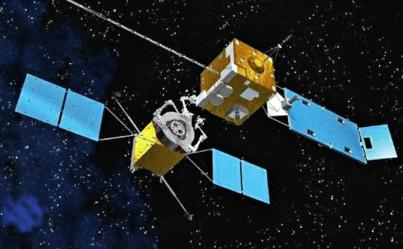Sci-Tech
Chinese Research Vessel Sails for Antarctica
The Chinese research vessel Haiyang Liuhao, also known as Ocean No. 6, set sail on July 8 for the Pacific Ocean and Antarctica on a 60,000-km expedition. The ship departed from the south Chinese city of Guangzhou, and is expected to return in mid-April next year.
The expedition has three tasks: It serves as a marine resource and carries out environmental evaluations in the West Pacific according to a contract with the International Seabed Authority. It also conducts distribution and comparative research on deep-sea resources in the East Pacific, and carries out comprehensive geological, geophysical and maritime research in and around the Antarctic Peninsula.
He Gaowen, chief scientist on the project, said the expedition will be of strategic importance for Chinas international seabed resource exploitation, safeguarding the countrys lawful rights to international seabeds and peaceful use in Antarctica.
Satellites Successfully Refuel in Orbit
China has successfully completed in-space refueling of orbital satellites following the launch of a new generation carrier rocket, the National University of Defense Technology announced on June 30.
Developed by the university, Tianyuan-1 is the countrys first inspace refueling system for orbital satellites. It was launched aboard the Long March-7 carrier rocket on June 25.
A series of core independent processes was tested and verified after the launch, and data and videos recording the full process were sent back to earth, according to a university statement. “The injection process was stable, and measurement and control were precise,” it said, adding that the test proved that Tianyuan-1 met design requirements.
Similar to air refueling for planes, the process refuels a satellite in orbit in a microgravity environment and will extend a satellites functional life while considerably boosting its maneuverability. According to estimates, the life of a satellite can be prolonged by 12 months with every 60 kg of fuel, thereby creating economic value worth nearly RMB 100 million. Though this is an area capturing a great deal of interest, the process is complicated and only few countries have begun experiments in this sphere.
Nature Selects 10 Star Scientists from China
Ten of Chinas leading scientists, who have made significant impacts in fields ranging from neuroscience and neutrinos to space science and structural biology, were highlighted in Nature magazines online edition on June 20.
“These 10 individuals highlight the breadth and promise of innovation in China, as the country continues its strong push to become a leader in science,” said Richard Monastersky, features editor of Nature.
Four female biologists are included in the list: Gao Caixia, whose lab became the first to use the CRISPR-Cas9 gene-editing technique in crops – specifically wheat and rice; structural biologist Yan Ning, noted for her work on determining the structures of proteins embedded in cells plasma membranes; Nancy Ip, whose leadership and research on basic neural biology and translational research for brain health are bolstering science and biotechnology in China; and geneticist Fu Qiaomei, whose work could redraft the history of Asias first anatomically modern humans.
The list also includes Minister of Environmental Protection Chen Jining, and Wang Yifang, director of the Beijing-based Institute of High Energy Physics.
Also mentioned were Wu Ji, director-general of Chinas National Space Science Center, and Lu Chaoyang, a professor at the University of Science and Technology of China. Cui Weicheng, scientist currently at Shanghai Ocean University, was also commended, as well as Qin Weijia, executive deputy director of the Chinese Arctic and Antarctic Administration.
New-Generation Carrier Rocket
China successfully blasted off its new- generation carrier rocket – the Long March-7 – from a new space launch center in Wenchang, Hainan Province, on June 25. The launch was the first in this location, and the 230th of Chinas Long March carrier rocket family.
Through a cloud of white smoke, the rocket, carrying a scaled-down version of “a re-entry module of a multi-function spacecraft,” ascended against the dark sky, trailing a vast column of flame.
Wang Hongyao, deputy chief commander of the mission, declared the launch a success just minutes later. He said the payload separated from the rocket 603 seconds after blast-off, and entered an oval orbit with a low point – or perigee – of 200 km, and a high point – or apogee – of 394 km. The re-entry module returned to Earth the following afternoon.
The Long March-7 is a medium-sized, two-stage rocket that can carry up to 13.5 tons into low-Earth orbit. Experts say it will become the main carrier for Chinas future space missions.
Earlier reports said the rocket now uses kerosene and liquid oxygen for its fuel, rather than a highly toxic propellant, making it more environmentally friendly and less expensive.
The projects mission was to verify the design and performance of the new carrier rocket, to evaluate the mission execution capacity of the Wenchang launch site, and to check coordination and compatibility of project-related systems.

